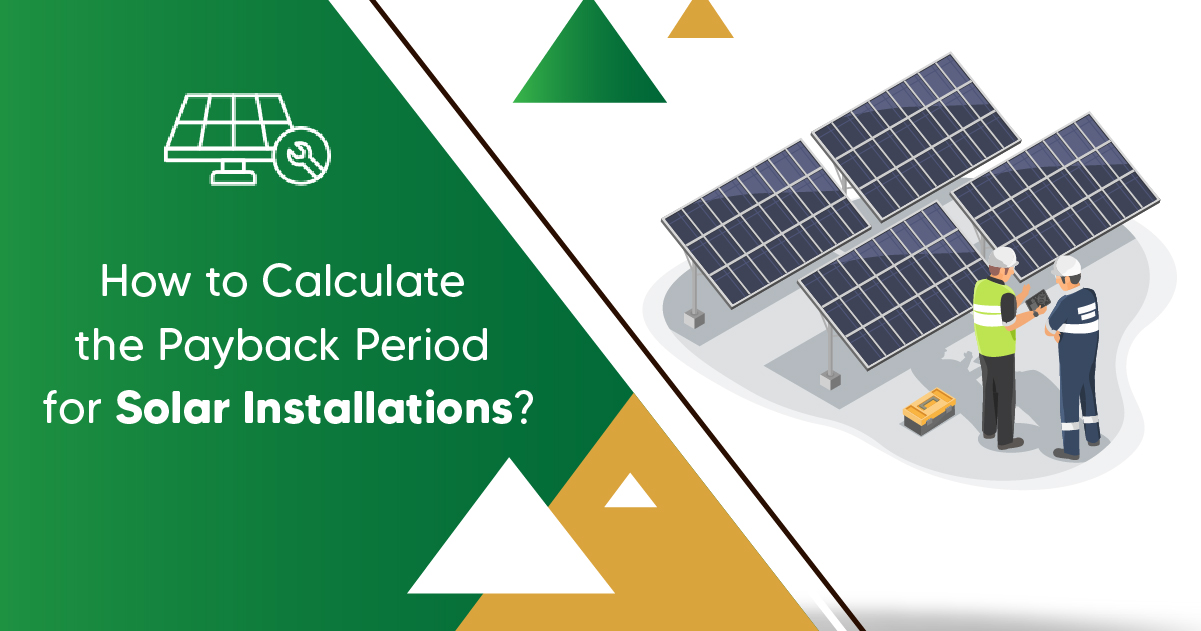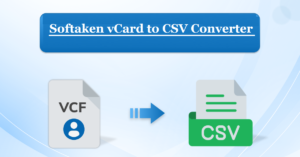How to Calculate the Payback Period for Solar Installations?
- 1 What is the Payback Period for Solar?
- 2 How Can Solar Users In India Calculate Payback Period?
- 3 Factors Influencing Solar Payback Period
- 3.1 Total Cost of the Solar System
- 3.2 Electricity Cost
- 3.3 Power Production
- 3.4 Electricity Consumption
- 3.5 Solar Tax Credits and Other Incentives
- 3.6 Solar System Size
- 4 Conclusion
The solar power system is a productive asset that can make you a significant amount of money. In addition, it can develop a good image for contributing to the sustainable development of the nation and protecting Mother Nature. Higher prices are recorded these days for properties equipped with solar installations. Although the solar journey can be exciting and rewarding, there are some financial dynamics that you must understand.
The payback period is one of the most crucial dynamics in deciding if solar investment is a smart financial move for you. In this post, you will understand everything you must know about the payback period on your solar investment.
What is the Payback Period for Solar?
The solar payback period or break-even point is the time taken for a solar system to pay for itself. It is the amount of time required to recover the initial solar panel investment cost through savings produced by electricity bills.
Moreover, it acts as a crucial metric for evaluating the financial viability of solar power systems. The solar payback period length will differ based on numerous factors. It includes the installation company you’re hiring, payment mode, and total number of solar panels installed.
However, the simple payback period doesn’t include depreciation, inflation, project lifetime, repair and replacement of the solar system, maintenance cost, and other parameters. This means that the true financial value of solar panels over their lifespan is not determined through payback period calculation. For this, you need to use more complex terms like IRR (internal rate of return) and NPV (net present value).
Compare various payback periods of different solar installation quotes to comprehend the financial benefits of each option. Furthermore, it will help determine what year your solar systems will start saving you money.
How Can Solar Users In India Calculate Payback Period?
What if we say you can enjoy great cost saving through solar power investment every year? Financial benefits can be availed not just in the form of reduced electricity bills but also in many more ways. It includes good and quick returns, government incentives, tax benefits, and more ways.
Total monthly savings from a 1-kilowatt (kW) solar system can be calculated by using the formula given below –
Total monthly savings = total kWh (kilowatt-hour) produced x electricity tariff rates.
A branded and high-quality solar panel of 1kW capacity can generate about 120 kWh of power per month. If the local electricity tariff rate is ₹7 per unit, then your total savings will be 120 x 7 = ₹840 per month and ₹10,080 yearly.
This means if you want to invest in a solar system of 3kW capacity, then your total annual savings would be around ₹30,240. Remember, installing a 3kW solar system will cost approximately ₹1,22,979 without any subsidy. However, households who want to install residential rooftop solar panels with a 40% subsidy provided by the government would need to invest ₹73,787.
If you’re purchasing a 3kWh solar system with a subsidy, then your payback period will be –
Payback period = initial solar system costs / annual savings per year = 73,787/30,240 =2.4 years
Remember, the calculation of solar payback period can differ based on several factors. Want to understand these factors? Keep scrolling down.
Factors Influencing Solar Payback Period
Several factors can influence the solar payback period and its calculation. The factors you need to consider are –
Total Cost of the Solar System
First, determine how much solar installations will cost you. The cost will depend on the solar system’s size. Installing a large system decreases the cost per kilowatt. Additionally, it will produce a significant amount of power, thereby providing you with a faster payback.
Electricity Cost
How much money you can save with solar investment depends on the cost of electricity. Therefore, determine how much the power from your local electricity board costs. However, keep into account that your electricity cost will likely rise over time. As a result, you could save more in the long term. Moreover, it could help to reduce the amount of time it requires to pay off the solar investment.
Power Production
Third, consider how efficient your installed solar panels are for power generation. Highly efficient solar systems will better capture sunlight and produce a huge amount of clean electricity.
Electricity Consumption
Fourth, check your home’s electricity usage, as it can also impact the payback period. To determine how much electricity you are using per month, check your electricity bill. Your monthly bill will show the number of units used per month. Most solar payback period calculations predict that solar panels counterbalance 100% of the power consumption.
Solar Tax Credits and Other Incentives
Financial incentives such as government subsidies and net metering policy can impact the payback period. The Indian government offers varying subsidies to encourage solar adoption.
Assessing these subsidies helps in understanding the financial influence on the solar payback period. SREC (Solar Renewable Energy Certificates or Solar Renewable Energy Credits) is another financial incentive that users may receive for the clean energy they produce. This factor is important for correct payback period calculation.
Net metering policy or mechanism allows solar users to send surplus energy generated by systems back to the grid. They will receive credits in exchange for exported energy, which will eventually counterbalance future utility bills.
Solar System Size
Estimate the solar system size based on your power consumption. If you use 400 units per month, installing a 3-kilowatt system will help you offset the electricity usage from the grid. Remember, you will require up to 300 square feet of space with no shadow.
Conclusion
The payback period is one of the simplest parameters to understand. Moreover, many solar users depend on it for quote comparison and to make confident solar decisions. Now that you understand how much savings you can enjoy with solar investment and what is its payback period, proceed with solar installations.
Since solar energy continues to contribute to ensuring the sustainable future of India, there are constant technological breakthroughs in the solar industry. We at Megamax Solar provide premium solar system installation for households, businesses, farmers, marketers, etc. Moreover, our professionals will define the financial dynamics that can assist you in harnessing the full advantages of renewable solar energy.

















